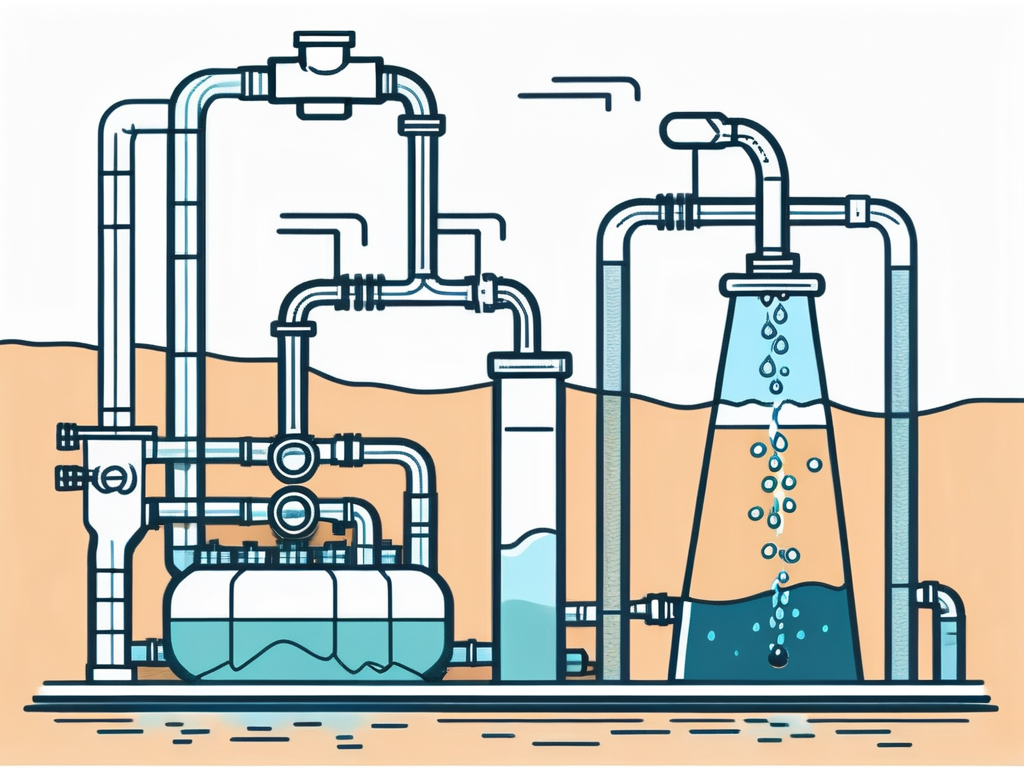
Effluent: Wastewater Treatment Explained
Wastewater treatment is a critical process in the management of water resources, and effluent plays a significant role in this process. Effluent, in the context of wastewater treatment, refers to the liquid waste or sewage that is discharged into the environment after being treated in a wastewater treatment plant. This article provides a comprehensive glossary on the topic of effluent and its role in wastewater treatment.
Understanding the intricacies of effluent and its treatment is crucial for environmental scientists, water management professionals, and anyone interested in the sustainable use of water resources. This glossary will delve into the various stages of effluent treatment, the technologies used, and the regulatory standards that govern this process.
Definition of Effluent
The term 'effluent' is derived from the Latin word 'effluere', which means 'to flow out'. In the context of wastewater treatment, effluent refers to the liquid waste or sewage that is discharged from a wastewater treatment plant after it has undergone treatment. This treated water is typically released into a natural water body such as a river, lake, or ocean.
Effluent can originate from a variety of sources, including domestic, commercial, and industrial activities. The composition of effluent can vary widely depending on its source, and it may contain a range of pollutants including organic matter, nutrients, pathogens, and various types of chemicals.
Types of Effluent
Effluent can be broadly classified into three types based on its source: domestic effluent, industrial effluent, and stormwater runoff. Domestic effluent originates from households and typically contains organic matter, nutrients, and pathogens. Industrial effluent, on the other hand, may contain a wide range of pollutants depending on the nature of the industrial activity. Stormwater runoff is generated when rainwater flows over land and picks up pollutants from the surface.
Each type of effluent requires a different treatment approach. For instance, domestic effluent is typically treated using biological processes that break down organic matter and remove pathogens. Industrial effluent, on the other hand, may require specialized treatment processes to remove specific types of pollutants.
Effluent Treatment Process
The effluent treatment process involves a series of steps designed to remove pollutants and make the water safe for discharge into the environment. The specific steps involved can vary depending on the nature of the effluent and the regulatory standards that apply, but a typical process includes preliminary treatment, primary treatment, secondary treatment, and tertiary treatment.
Preliminary treatment involves the removal of large solids and grit from the effluent. This is typically achieved using screens and grit chambers. Primary treatment involves the settling of suspended solids and the removal of a portion of the organic matter. This is typically achieved using sedimentation tanks.
Secondary Treatment
Secondary treatment involves the biological degradation of organic matter. This is typically achieved using activated sludge processes or trickling filters. The activated sludge process involves the cultivation of a microbial community that consumes the organic matter in the effluent. The trickling filter process involves the passage of effluent over a bed of porous material, which supports a microbial community that degrades the organic matter.
Secondary treatment also involves the removal of nutrients such as nitrogen and phosphorus. This is typically achieved using nitrification and denitrification processes for nitrogen removal, and chemical precipitation or biological uptake for phosphorus removal.
Tertiary Treatment
Tertiary treatment involves the removal of residual pollutants that were not removed during primary and secondary treatment. This can include the removal of residual organic matter, nutrients, and pathogens, as well as the removal of specific pollutants such as heavy metals.
Tertiary treatment can involve a variety of processes, including filtration, disinfection, and advanced oxidation. Filtration involves the passage of effluent through a filter to remove suspended solids. Disinfection involves the use of chemicals or ultraviolet light to kill pathogens. Advanced oxidation involves the use of strong oxidizing agents to break down resistant organic compounds.
Effluent Quality Standards
The quality of effluent discharged from a wastewater treatment plant is typically regulated by government agencies to protect the environment and public health. These regulations specify the maximum allowable concentrations of various pollutants in the effluent.

The specific standards can vary depending on the location and the receiving water body, but they typically include limits on biochemical oxygen demand (BOD), chemical oxygen demand (COD), total suspended solids (TSS), nutrients (nitrogen and phosphorus), and pathogens.
Biochemical Oxygen Demand and Chemical Oxygen Demand
Biochemical oxygen demand (BOD) and chemical oxygen demand (COD) are measures of the amount of organic matter in the effluent. High levels of BOD and COD can deplete the oxygen levels in the receiving water body, leading to the death of aquatic life. Therefore, it is crucial to reduce the BOD and COD levels in the effluent to acceptable levels before discharge.
BOD is a measure of the amount of oxygen required by microorganisms to decompose the organic matter in the effluent under aerobic conditions. COD, on the other hand, is a measure of the amount of oxygen required to chemically oxidize the organic matter in the effluent. Both BOD and COD are typically reduced during the secondary treatment stage.
Total Suspended Solids and Nutrients
Total suspended solids (TSS) is a measure of the amount of solid material suspended in the effluent. High levels of TSS can cause turbidity in the receiving water body and harm aquatic life. Therefore, it is important to reduce the TSS levels in the effluent to acceptable levels before discharge.
Nutrients such as nitrogen and phosphorus can cause eutrophication in the receiving water body, leading to the growth of harmful algal blooms. Therefore, it is crucial to reduce the nutrient levels in the effluent to acceptable levels before discharge. Nutrient removal is typically achieved during the secondary and tertiary treatment stages.
Effluent Treatment Technologies
There are a variety of technologies available for the treatment of effluent, ranging from conventional biological processes to advanced physicochemical processes. The choice of technology depends on the nature of the effluent and the effluent quality standards that apply.
Conventional biological processes such as activated sludge and trickling filters are widely used for the treatment of domestic effluent. These processes are effective at reducing BOD, COD, and TSS levels, and they can also achieve some degree of nutrient removal. However, they may not be effective at removing specific pollutants such as heavy metals or resistant organic compounds.
Advanced Treatment Technologies
Advanced treatment technologies are typically used to achieve further pollutant removal beyond what can be achieved with conventional biological processes. These technologies can include membrane processes, advanced oxidation processes, and adsorption processes.
Membrane processes involve the use of semi-permeable membranes to separate pollutants from the effluent. These processes can achieve high levels of pollutant removal, but they can be expensive and require a high level of technical expertise to operate.
Emerging Treatment Technologies
Emerging treatment technologies are being developed to address the limitations of conventional and advanced treatment technologies. These technologies aim to achieve high levels of pollutant removal while minimizing energy consumption and waste production.
Examples of emerging treatment technologies include bioelectrochemical systems, which use microorganisms to generate electricity while treating effluent, and hybrid systems, which combine different treatment processes to achieve synergistic pollutant removal. These technologies are still in the early stages of development, but they hold promise for the future of effluent treatment.
Conclusion
Effluent treatment is a complex process that involves a variety of technologies and regulatory standards. Understanding the intricacies of this process is crucial for the sustainable management of water resources. This glossary provides a comprehensive overview of the key concepts and technologies involved in effluent treatment, and it serves as a valuable resource for anyone interested in this important field.

As the demand for clean water continues to increase, and as the environmental and public health impacts of effluent discharge become increasingly apparent, the importance of effective effluent treatment cannot be overstated. It is hoped that this glossary will contribute to a better understanding of this critical process and inspire further research and innovation in the field of effluent treatment.



